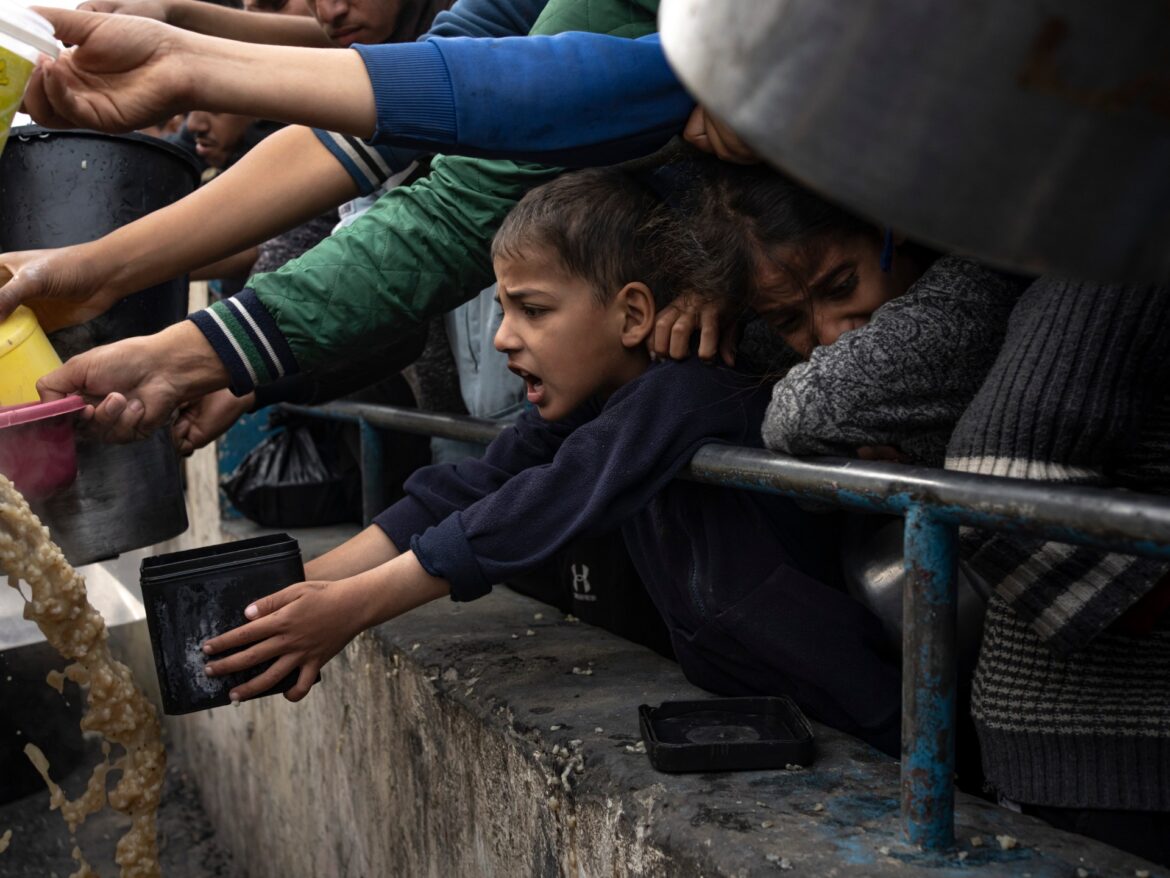The proportion of households affected by acute food insecurity is the highest ever recorded globally, the report said.
All of Gaza’s 2.3 million residents face critical levels of hunger and the risk of famine increases every day, according to a United Nations-backed report.
The proportion of households in Gaza affected by high levels of acute food insecurity is the highest ever recorded in the world, according to the Integrated Food Security Classification (IPC) report released on Thursday.
The scale of hunger in Gaza has even eclipsed the near-famines experienced in Afghanistan and Yemen in recent years, according to the report’s figures.
“Everyone in Gaza is hungry”
“The situation cannot be worse,” said World Food Program chief economist Arif Husain.
“I have never seen something of this magnitude happen in Gaza and at this speed – how quickly it happened in just two months. »
#Gaza
Urgent action is needed.Hostilities, including bombings, ground operations and siege of the entire population, have caused catastrophic levels of acute food insecurity.
There is a risk of famine.
Read more
pic.twitter.com/e9C155XqAP
— The Integrated Food Safety Phase Classification (@theIPCinfo) December 21, 2023
The report from 23 UN and non-governmental agencies reveals that the entire population of Gaza faces a food crisis, with 576,600 people living in a state of disaster – or famine.
“This is a situation where almost everyone in Gaza is hungry,” Husain said.
“People are very, very close to big outbreaks because their immune systems have become very weak because they’re not getting enough nutrition,” he said.
The report says every person in Gaza is expected to face high levels of acute food insecurity over the next six weeks.
The 23 agencies predict that in the “most likely scenario”, the entire population of the Gaza Strip would be at “crisis or worse” hunger levels by February 7, after four months of war . According to the IPC’s five-phase classification of food insecurity, crisis is in phase three, emergency is in phase four, and disaster or famine is in phase five.
“This is the highest proportion of people facing high levels of acute food insecurity that the IPC initiative has ever ranked for a given region or country,” the report said.
The international humanitarian organization CARE described the figures as “alarming”.
Risk of starvation
The humanitarian situation in Gaza has deteriorated rapidly since Israel launched a major military operation on October 7 with heavy airstrikes and a ground offensive devastating large areas of the enclave.
“There is a risk of famine, and it is increasing every day as the current situation of intense hostilities and restricted humanitarian access persists or worsens,” the IPC for Gaza said.
The IPC sets the global standard for determining the severity of a food crisis using a complex set of technical criteria.
The report warns that the risk of famine “increases every day”, attributing the famine to insufficient aid entering Gaza.
Aid trucks from Egypt have delivered food, water and medicine, but the UN says the amount of food is only 10 percent of what is needed by the territory’s residents, most of whom are displaced.
Aid distribution in Gaza has been hampered by military operations, inspections of aid requested by Israel, communications blackouts and fuel shortages.
Some desperate Palestinians in Gaza have jumped onto aid trucks to try to salvage their meager supplies of food and other goods. There were reports of residents eating donkey meat and emaciated patients begging for food.
Meanwhile, the death toll from Israel’s relentless bombing of Gaza has surpassed 20,000, 70 percent of them women and children.
Around 1.9 million Gaza residents – more than 80 percent of the population – have been driven from their homes. More than a million people fill UN shelters.
The war has also pushed Gaza’s health sector to collapse. Only nine of its 36 health facilities are still partially operating – and all of them are located in the south, the World Health Organization said on Thursday.



